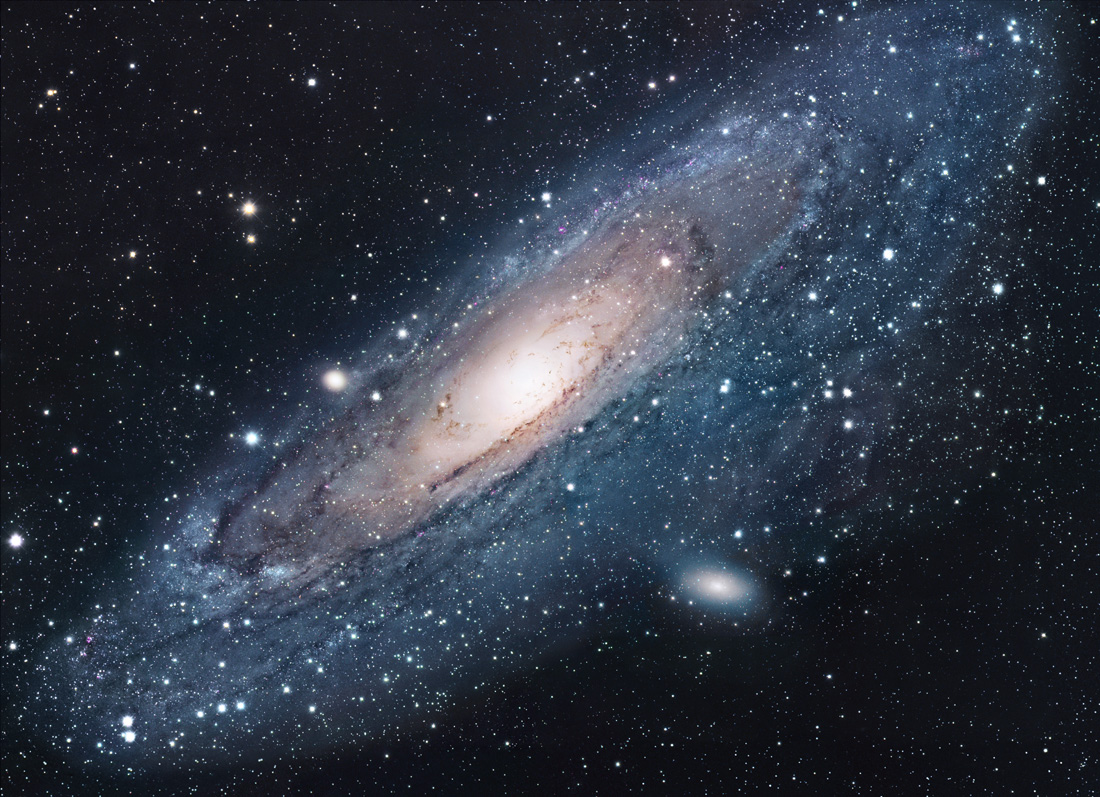[/caption]
The Andromeda galaxy is the closest spiral galaxy to the Milky Way (though it’s not the closest galaxy). It’s the most distant object you can easily see with the naked eye (under good observing conditions). Andromeda is 220,000 light years in diameter, and is one of the 35 objects that make up what is called the Local Group. Andromeda lies, of course, in Andromeda constellation.
The Andromeda galaxy (also known as Messier 31, M31, or NGC 224) could be considered the big brother of the Milky Way, as it contains over a trillion stars (compared to our 200-400 billion), and is approximately 220,000 light years across to our 100,000. Andromeda and the Milky Way formed at roughly the same time – 13.5 billion years ago – near the beginning of the Universe. Our galaxy is thought to look much like Andromeda. Both Andromeda and the Milky Way got to their current size by eating up other galaxies they collide with. The expansion of the Universe causes most galaxies to move away from us, but Andromeda and the Milky Way are actually headed towards each other.
Andromeda and the Milky Way are good neighbors, but eventually our neighbor is going to move in with us – the Milky Way and Andromeda are approaching each other at 200 kilometers per second, and will eventually collide. There’s no need to panic, though, as Andromeda is over 2 million light years away, and the collision won’t happen for another 2 or 3 billion years. Astronomer John Dubinski of the University of Toronto has an excellent animated simulation from multiple perspectives of what this galactic dance could look like.
The collision between Andromeda and the Milky Way won’t be catastrophic, and after about 5 billion years from now the resulting galaxy will have settled down into an elliptical galaxy. There is a small chance, though, that the Sun won’t be part of this new “Milkomeda” galaxy.
Fraser and Pamela discuss how the collision between the Milky Way and Andromeda will look from Earth in the September 28th, 2008 episode of Astronomy Cast, and the Milky Way in Episode 99.

